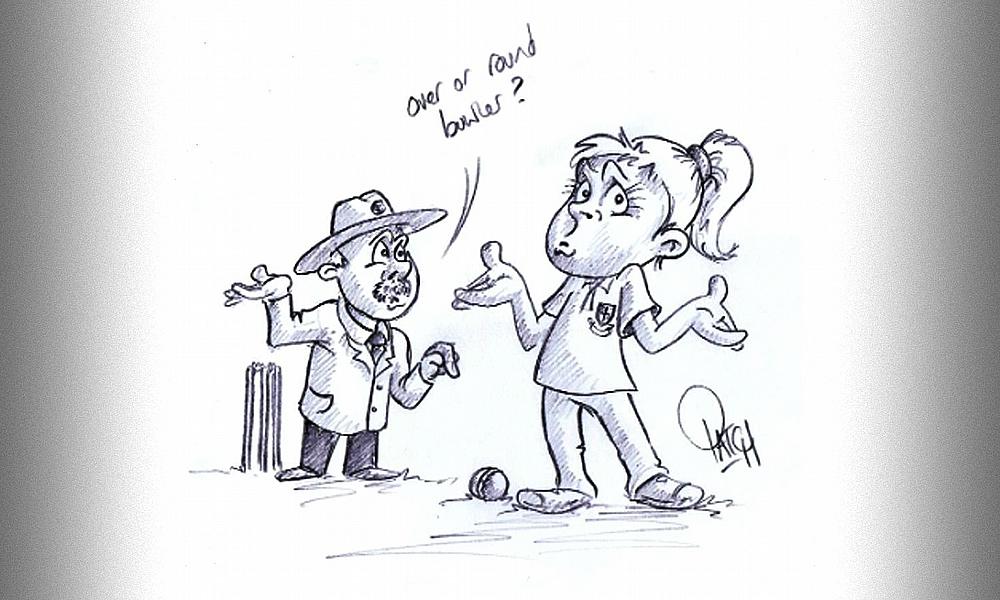Over or Round?

When working with younger bowlers, we often see them bowling over and round the wicket with little or no idea why they are doing it, or how this can affect their opportunities of taking a wicket. Whilst experimentation amongst learners is great to an extent, we wanted to look a little more closely at this and illustrate to younger players how by bowling round the wicket, particularly as a right arm bowler bowling at a right-hand batter, can reduce the chances of taking a wicket.
If we look at a right-arm away swing bowler bowling at a right-hand batter, under normal circumstances the bowler would bowl over the wicket. Under these conditions, the bowler will be looking claim the wicket in a variety of ways. By swinging the ball away from the bat, and with slips in place, a catch behind the wicket or in the slips cordon is likely. Plan A - caught. In an ideal world, (and in all away swing bowlers’ dreams) the ball starts off on a middle and leg stump line, swings away on the bounce and hits the top of off stump as the batter is turned around trying to hit the ball through mid-wicket: Plan B – bowled. For a seasoned away swing bowler, the pads can also be a target. To a batter who plants the front foot down the line of the stumps and allows their head to fall outside the line of the front foot, a ball pitching on the stumps and straightening with the swing is a threat as the bat inevitably travels across the line of the ball. Plan C – LBW.
The LBW dismissal is of interest to the away swing bowler, particularly later in the game maybe when the ball has stopped swinging quite so much. The ball delivered with an upright seam may nip around a little depending on the surface, so a delivery swinging away and darting back in is, again, slightly dreamy for the bowler; particularly if it beats a defence or drive to sneak through between bat and pad, but the front pad it definitely a target for the bowler.
If we look at the path of the ball bowled over the wicket, we can see that with some swing, all three dismissals are a possibility. Caught, bowled and LBW. Take this same delivery around the wicket and suddenly we can see that in order for the ball to hit the stumps, the ball needs to pitch outside the line of the leg stump, immediately ruling out the chance of LBW. Bowled is also far less likely around the wicket with the batter’s pads now being in the way of the stumps.

In our second book, ‘A Leading Edge for Bowlers’ (due out in summer 2019), we look far more in depth at the circumstances and reasons for bowling over or round the wicket. For younger bowlers, as a coach, I would generally encourage them to bowl over the wicket, developing some degree of consistency and control from one side of the wicket. Discourage them from bowling round the wicket and ask them to think about why they are doing it. Ask them to think about how they are planning to get the batter out, and then work out if bowling over or round will give them the best chance of achieving their goal. The reasons why right arm bowlers bowl round the wicket to right hand batters are varied, and in most cases not appropriate for bowlers learning the game. Whether left arm or right arm, encourage over the wicket as the standard. The complexities of bowling round the wicket can come later on.
Good luck
PL & WD
A Leading Edge is a series of educational cricket books written and illustrated by Patrick Latham and Wesley Durston. Their first book, ‘A Leading Edge for Captains’ written for younger captains looking to find out more about leadership and captaincy is available on Amazon as well as in a range of independent bookshops around the UK. ‘A Leading Edge for Bowlers’ is due for release later in 2019.
© Cricket World 2019




